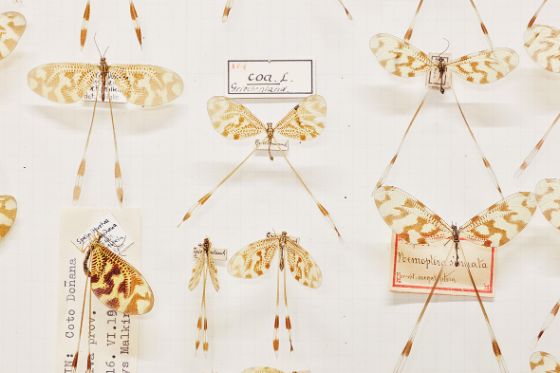Insect Marls
The lowermost sediments of the north-western Jura in Switzerland has become famous in the literature, due to the occurrence of insects and beautifully preserved sea urchins, brittle stars and crinoids. As part of this research project, we are examining a fossiliferous locality that has remained untouched for 140 years. The fossil content of the layers is small, but extraordinarily well preserved.
In 1865, Professor Oswald Heer of Zurich wrote 'Die Urwelt der Schweiz' (The Primeval World of Switzerland) describing the clay deposits of the lowermost Lias (a sequence of rock strata) in Northern Switzerland. Based on the finds at Schämbelen near Windisch, Heer drew a picture of a rich variety of life almost 200 million years ago: extensive forests of seaweed growing rampantly on the bed of the shallow sea, amongst which lived mussels, ammonites, crabs, anemones, brittle stars and sea lilies.
Heer's picture is in fact erroneous in many ways, as was shown by excavations made in 2004 with the Frick Working Group at Schämbelen, Frick and near Küttigen. The 'fossilised seaweed' proved to be trace fossils and a layer rich in insects described by Heer could not be found. Overall, fossils were not common at the Schämbelen site, but in places certain specimens were in fact extremely well preserved. The 'enormous richness of fossils' which Heer described was probably an artefact: farmers across the region mined large quantities of these layers to be used as fertiliser for their fields, taking the fossils they found to Heer in return for payment.
